A Timeline of the History of the Republican Party
The Grand Old Party. The Party of Lincoln. However you swing it, the birth of the Republican Party in 1854 meant a new rival for the Democrats.
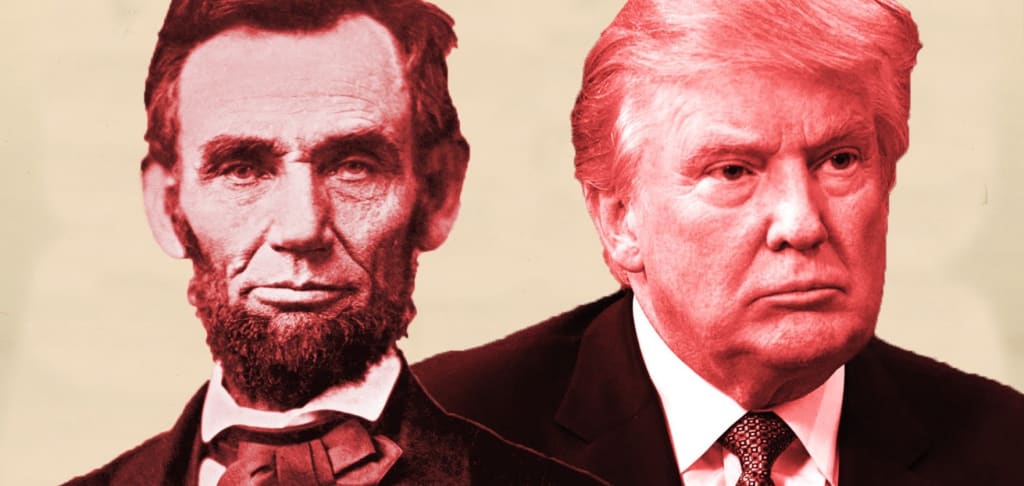
From the ashes of the Whig Party came the Republicans. United with the desire to abolish slavery, the founders of the party met in a small schoolhouse in Ripon, Wisconsin. The Republican party has taken major strides since then.
Republicans usually take a more conservative stand on issues. They believe the government should play a smaller role in people's lives. A desire for minimalism. They favor lower taxes, less government, and less spending on social programs. Republicans also believe in less government regulations in business and even less in the economy.
Picture this:An America divided by the Missouri Compromise of 1820. A great nation, torn in two — one side pro-slavery in the South and the other (as you may have guessed by the current state of affairs) anti-slavery in the North. Northern leaders like Charles Sumner and Horace Greeley saw that the Civil War was inevitable. A new party had to be formed to carry the righteous through the storm.
And thus, the name "Republican" was chosen. It alluded to Thomas Jefferson's Democratic-Republican Party. By definition, it represented the party's commitment to life, liberty, and pursuit of happiness. But that was only the very beginning of the history of the Republican Party.
March 20, 1854: The modern Republican Party is born.
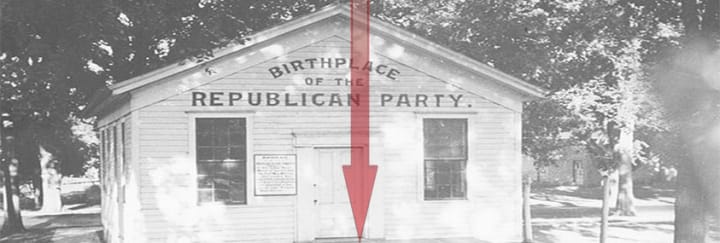
Little White Schoolhouse. Ripon, Wisconsin.
The history of the Republican Party begins with growing discussions on slavery. Former members of the Whig Party met at schoolhouse in Ripon, Wisconsin to establish a new party to oppose President Andrew Jackson. What was the issue with him? He had shown himself incapable of coping with the national crisis slavery was becoming.
June 17-19, 1856: First Republican National Convention
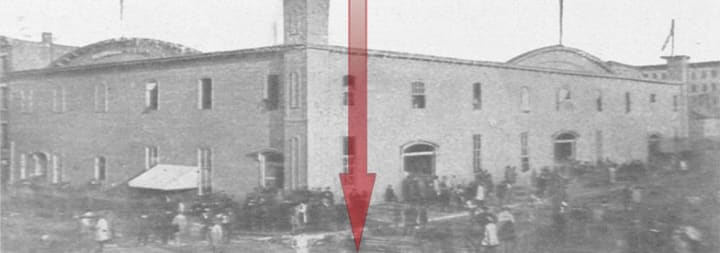
Musical Fund Hall. Philadelphia, Pennsylvania.
Ominous talk of the pending civil war flooded the streets and filled the ears of Americans. Republicans decided to congregate and discuss. A Republican National Committee was appointed.
What better place to preach patriotism than Musical Fund Hall in Philadelphia, Pennsylvania?
November 6, 1860: Abraham Lincoln was the First Republican President.

Abraham Lincoln was a man of many hats (pun intended). He was a Kentucky-born lawyer and a former Whig representative to Congress. He was also the 16th president of the United States and is noted for being one of the greatest US presidents of all time. The election was held on November 6, 1860.
January 1, 1863: President Abraham Lincoln issues Emancipation Proclamation.
The Emancipation Proclamation was an order by US President Abraham Lincoln to free slaves in ten states: Texas, South Carolina, North Carolina, Georgia, Alabama, Mississippi, Arkansas, Virginia, Kentucky and Louisiana.
Little Known Fact: Lincoln actually had to issue the Emancipation Proclamation twice.
April 15, 1865: Abraham Lincoln Dies.
You would (hopefully) not be surprised to find out that Abraham Lincoln died by being assassinated. He was shot in the head by Confederate sympathizer John Wilkes Booth at Ford's Theatre in Washington, DC. All he wanted was dinner and a show. Lincoln's death plunged the United States into despair. Millions of people lined the train route to pay respects and it lessened the divide between the Democratic and Republican Party.
November 25, 1874: Republican Elephant is Born

Cartoonist Thomas Nast used the Democratic donkey in newspaper cartoons. Nast invented the Republican Elephant shortly afterwards. Yes, that's right, the Republican elephant started as a newspaper cartoon! This is probably one of those things you didn't know about the Republican Party. That symbol quickly gained popularity. If only he knew how popular it ended up being to this day.
March 4, 1897: William McKinley is elected President.

William McKinley was, at first, the successful governor of Ohio as a member of the Republican Party. In 1897, he was elected president of the United States. He won a landslide victory over Democrat William Jennings Bryan to become the 25th President of the United States.
September 14, 1901: Theodore Roosevelt is elected President.

Theodore "Teddy" Roosevelt's political history began with him as a rising, young, Republican politician. On top of being a statesman, author, explorer, soldier, naturalist and reformer, he became the 26th President of the United States. The fact that he was a dedicated conservationist seems to have been lost in the annals of history. Roosevelt also won a Nobel Peace Prize for his negotiations to end the Russo-Japanese War.
He won a second term in 1901.
November 7, 1916: Jeannette Rankin, the First Woman Elected to Congress in the History of the Republican Party
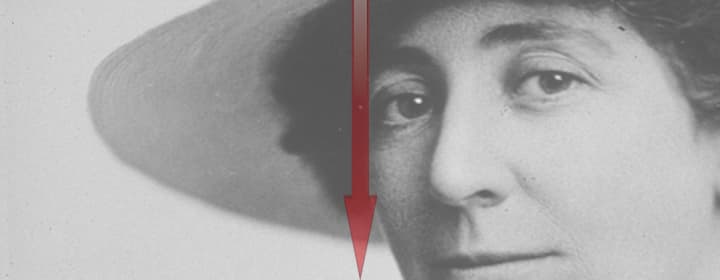
Jeannette Rankin was the first woman elected to Congress in the history of the Republican party. Of any party, actually. Let me backtrack and lay it all out for you: Jeannette Rankin was the first woman to even hold national office. She was also a notorious women's rights advocate and one of the most powerful women in the political world at the time.
January 20, 1953: Dwight Eisenhower is elected President.

Remember D-Day during World War II? Dwight D Eisenhower was at its forefront. He was the supreme commander of the Allied forces in Western Europe during World War II. During his time as the 34th President, he was one of the most active presidents in the history of the Republican party. He managed to quell Cold War tensions with the Soviet Union — Without full fledged war, somehow.
November 5, 1968: Richard Nixon is elected President.
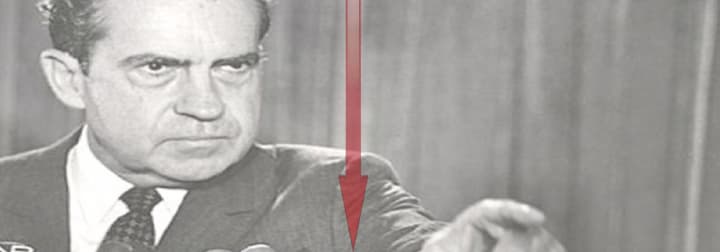
Richard Nixon was the 37th President of the United States. He played a large role in an event in history that Republicans are, to this day, trying desperately to forget.
June 17, 1972: Watergate scandal begins.
The Watergate scandal began with a burglary at the headquarters of the Democratic National Convention. Nixon's involvement in Watergate tarnished his legacy and began the thread of cynicism about the government that continues to this day.
August 9, 1974: Richard Nixon resigns because of Watergate.
Watergate (sort of) ended with Nixon's resignation. He was facing certain impeachment at the time.
August 9, 1974: Gerald Ford becomes President.

Gerald Ford had a unique role in the history of Republican politics, and American history in general. His presidency was a direct result of Nixon and the Watergate scandal. Ford became the first unelected President in history.
November 4, 1980: Ronald Reagan is elected President.

Ronald Reagan was one of those famed Hollywood actors who went into politics, and he was popular as a California governor. Later, he would be recognized as the 40th United States President from 1981 to 1989. Republicans loved him because he cut taxes and increased defense spending. He also is credited with helping bring a quicker end to the Cold War.
November 8, 1988: George H.W. Bush is elected President.

George Herber Walker Bush, not be confused with his son, served as the 41st President of the United States. His popularity among Republicans and Democrats was hurt because of issues with his economic policies.
November 7, 2000: George W. Bush becomes President.

George W. Bush, not to be confused with his — nevermind. He narrowly won what was likely the closest race in the history of the Republic party in 2000.
March 20, 2003: Iraq War begins.
The Iraq War, also known as the Third Gulf War, began on March 20, 2003. It all started with the invasion of Iraq, known as "Operation Iraqi Freedom." The rationale? The assumption that the Iraqi government possessed weapons of mass destruction and posed an immediate threat to the United States and its allies. The mission? Take down Saddam Hussein and attempt to establish a new government. The issue? There were no weapons and the plan was a major failure.
April 25, 2007: John McCain announces he will run for President.

In February of that 2007 calendar year, John McCain appeared on the Late Show with David Letterman and informally announced that he would seek the presidential nomination on behalf of the Republicans.
Sarah Palin made the decision to become John McCain's running mate on August 29, 2008. She is the first Republican female (and the second woman in history) to run for vice president on a United States major party's ticket. John McCain and Sarah Palin conceded on November 4, 2008.
November 6, 2012: Mitt Romney loses election to Barack Obama

Mitt Romney lost to ex-President Barack Obama, who succeeded at winning his second term. His vice president was to be Paul Ryan from Wisconsin, who ended up holding a respectable position as Speaker of the House of Representatives in later years.
November 8, 2016: Donald J. Trump elected President.

Some cried. Some rejoiced. Donald Trump, a New York City real estate developer and reality TV star, was elected as the 45th President of the United States of America. His historic victory against Hillary Clinton was attributed to her failed presidential campaign, a dissatisfaction with the policies of the previous presidency, and an appeal towards his outspokenness and business success.
This event resulted in many loyal Republicans questioning their party and Republican values. At the same time, it resulted in a widening of the divide between the Republican and Democratic parties. Many of us simply wanted to address a letter to the White House saying, "Dear Donald." How did we arrive here? Could this be the last page of the history of the Republican party as we have come to know it?
About the Creator
Eric Green
Productive achievement is mankind's most noble activity.


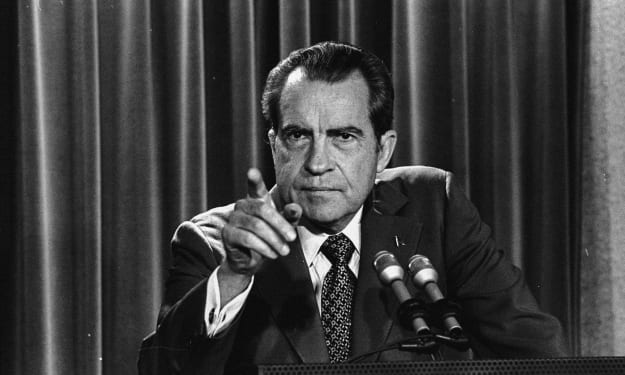



Comments
There are no comments for this story
Be the first to respond and start the conversation.